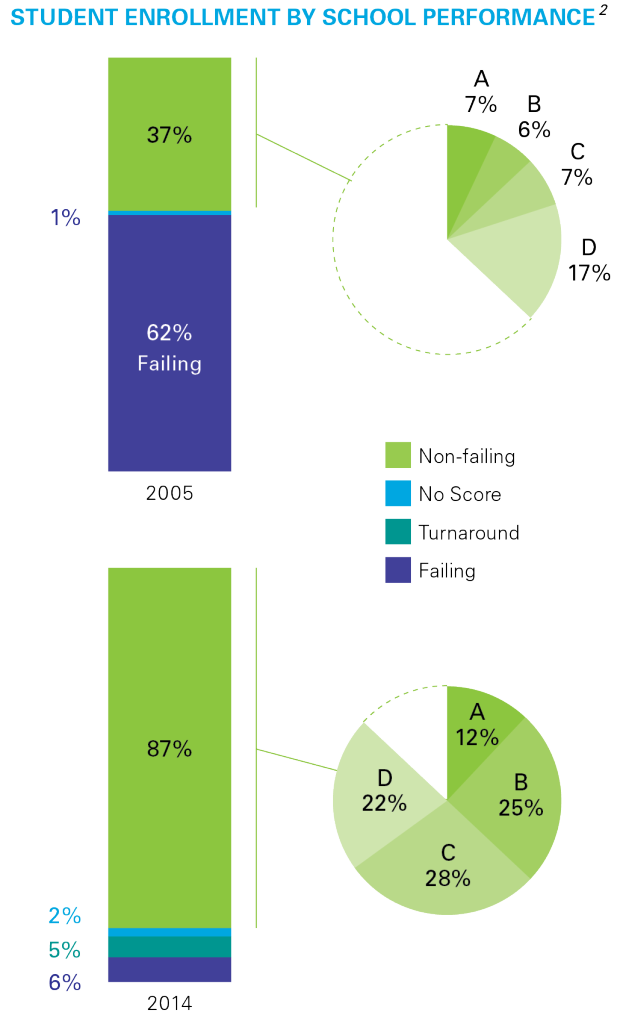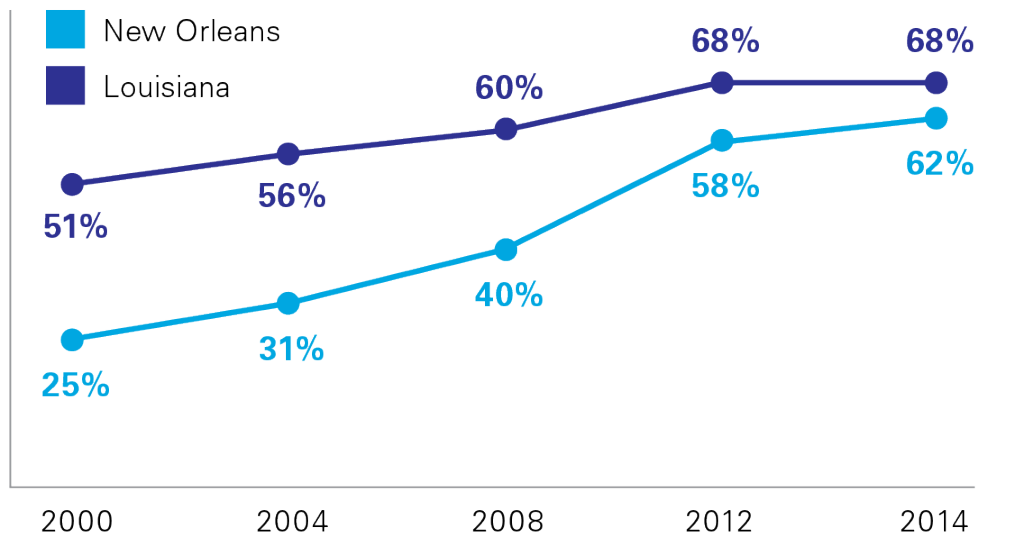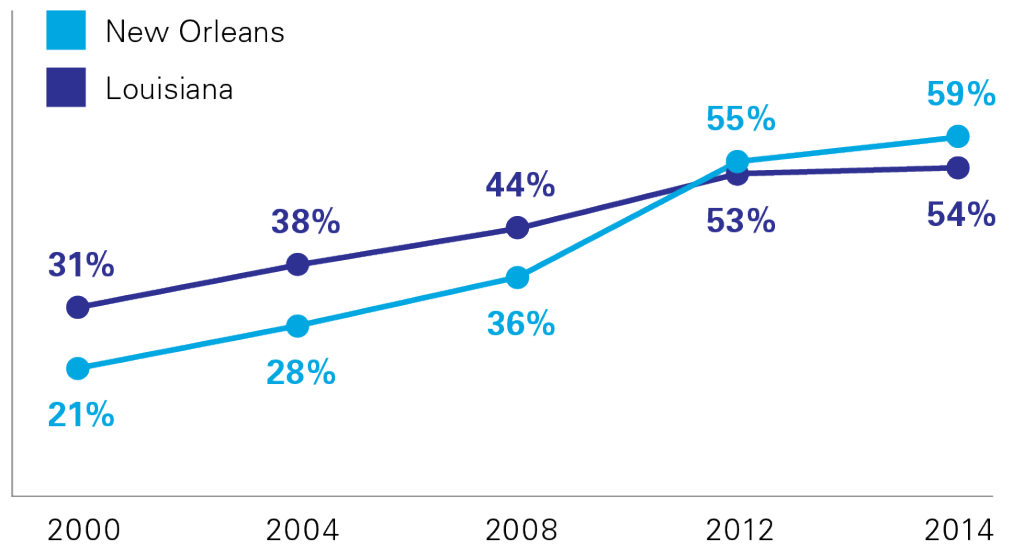The state has released data on high school performance.
The Really Good News
New Orleans showed robust growth on the End of Course Tests (EOCs).
- New Orleans1 (OPSB & RSD) is 8th in improvement in the state, with 59% of students proficient (scoring Excellent or Good) compared to 52% in 2013.
- This is a jump of 7 percentage points; the state improved 3 points, from 59% to 62% proficient.
- Compared to the other 69 districts, New Orleans is now #37, up from #47 last year (up 11 spots).
- When we look at all New Orleans2, including Type 2 charters and NOCCA, 61% of students are proficient, just 1 point below the state average.
The state has been phasing in the EOCs by testing more subjects each year. This year, for the first time, all six subjects were tested: Algebra, Biology, English II, English III, Geometry and U.S. History. Since 2011, New Orleans has improved 14 points, while the state has improved 7 points.
Percent of Students (OPSB & RSD) Proficient

See below for EOC performance by school.
The Really Good News (part 2)
New Orleans students improved on the ACT
All students are now required to take the ACT. Many take it multiple times, and ACT uses their highest score.
- Looking at all New Orleans high schools, 50% of students scored an 18 or higher, up 6 points from 44% in 2013.
- Statewide, 59% of Louisiana students scored an 18 or higher, a 1 point gain from 2013.
- 18 is the score that ACT says is aligned with college success.
Continue reading →




